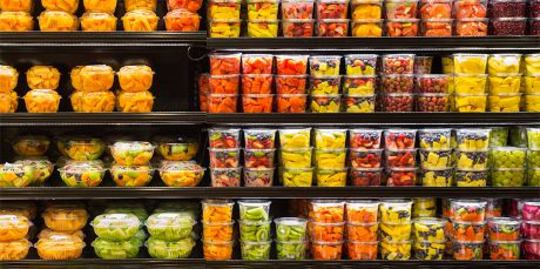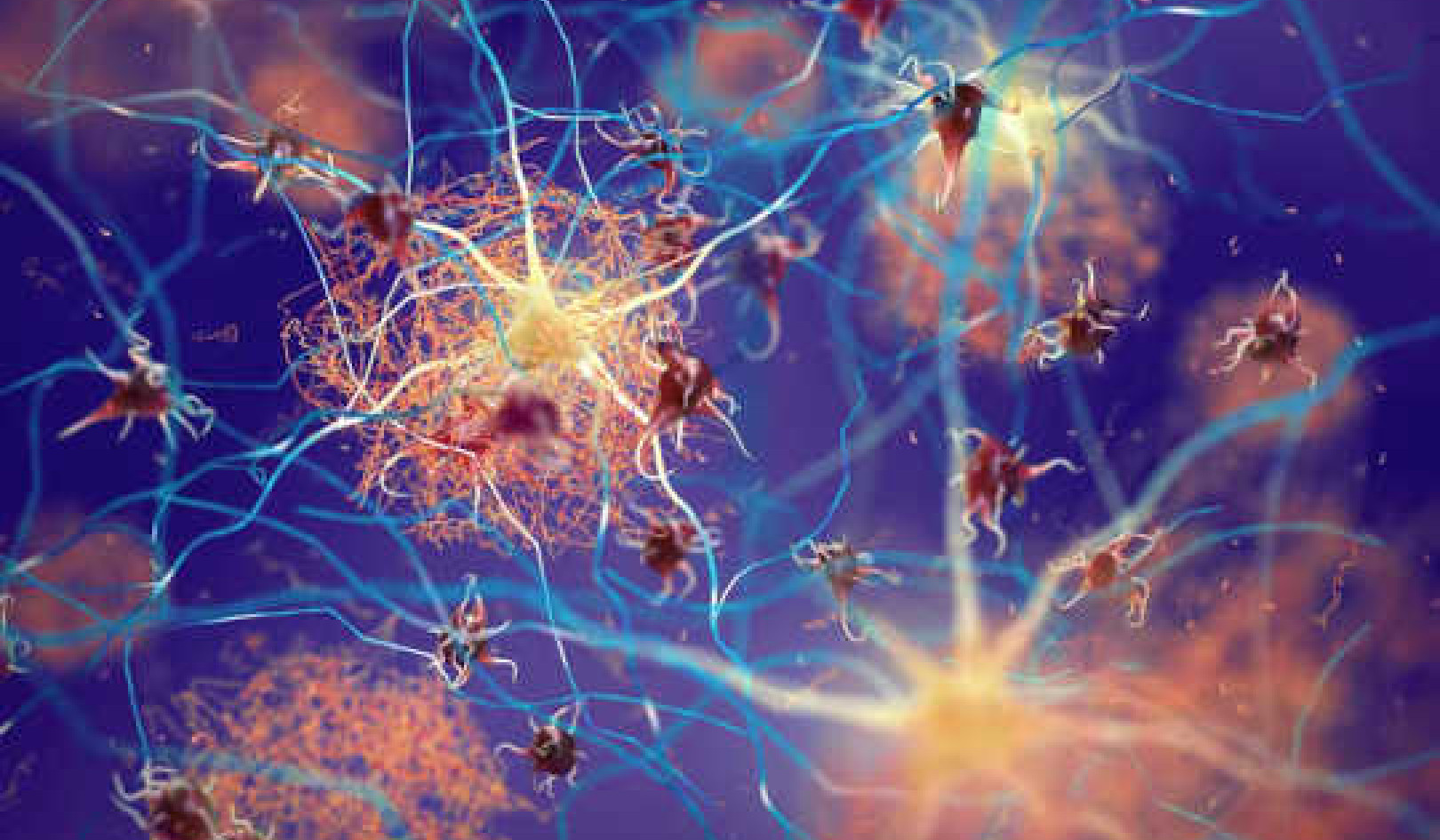
Photo © iStockphoto.com/littleny
October 13, 2014 — It’s almost impossible to imagine life without flexible, transparent and water-resistant food packaging, without plastic sandwich bags, cling film or shelves filled with plastic jars, tubs and tubes, and durable bags and boxes.
While storing food in containers dates back thousands of years, and food has been sold in bottles since the 1700s and cans since the 1800s, what might be considered the modern age of food packaging began in the 1890s when crackers were first sold in sealed waxed paper bags inside a paperboard box. Plastics and other synthetics began to appear in the 1920s and ’30s, shortly after chemical companies started experimenting with petroleum-based compounds and pioneering new materials that could be used for household as well as industrial applications.
Fast forward to 2014: Upwards of 6,000 different manufactured substances are now listed by various government agencies as approved for use in food contact materials in the U.S. and Europe — materials that can legally go into consumer food packaging, household and commercial food containers, food processing equipment, and other products.
Recent analyses have revealed substantial gaps in what is known about the health and environmental effects of many of these materials and raised questions about the safety of others. A study published this past July found that 175 chemicals used in food contact materials are also recognized by scientists and government agencies as chemicals of concern — chemicals known to have adverse health effects. Another published in December 2013 found that more than 50 percent of food contact materials in the U.S. Food and Drug Administration database of such substances lacked accompanying toxicology information filed with the FDA about the amount people can safely eat. This database is publicly available and searchable, but the database itself doesn’t include toxicology information about these substances or any details of the products in which the listed chemicals are used.
Presumably, the primary goal of food packaging is to keep food safe to eat. But what do we actually know about the stuff that surrounds our food? What do we know about how these materials may interact with the food they touch, or their potential effects on human health and the environment?
Plastics, Coatings, Colors, Glues
In the U.S., the FDA regulates food contact materials, classifying them as “indirect food additives.” These materials, which fall under the jurisdiction of the Food Drug and Cosmetic Act, include not only the polymers that make up plastics but also resins and coatings used in can linings and jar lids, pigments, adhesives, biocides and what the FDA charmingly calls “slimicides.” The FDA distinguishes these substances from those added to food itself by explaining that food contact materials are “not intended to have a technical effect in such food,” meaning that these substances are not supposed to change the food they touch.
This categorization makes such substances exempt from food ingredient labeling requirements, explains Dennis Keefe, director of the FDA’s Office of Food Additive Safety. In other words, food packaging need not carry any information about what it’s made of. Any such information is voluntary, often geared toward facilitating recycling and sometimes part of marketing campaigns declaring a product “free of” a substance of concern.
“Food packaging chemicals are not disclosed, and in many cases we don’t have toxicology or exposure data,” explains Maricel Maffini, an independent scientist and consultant who specializes in food additives research. Yet a core component of the FDA’s regulation of food contact materials is based on the assumption that these substances may migrate into and be present in food.
In fact the FDA’s system for approving food contact materials — which it does on an individual basis, with approval granted to a specific company for a particular intended use — depends on how much of a substance is expected to migrate into food. This is assessed based on information a company submits to the FDA; the FDA may come back to a company with questions and do its own literature search, but it doesn’t send the substances to a lab for testing as part of the approval process. The higher the level of migration, the more extensive toxicological testing the FDA requires.
In addition to the materials themselves, Muncke explains, these substances’ chemical breakdown and by-products need to be considered.“We’re talking parts per billion,” explains George Misko, partner at Keller & Heckman, a Washington, D.C.–based law firm that specializes in regulation. But that’s a level at which some chemicals used in food packaging have been found to be biologically active.
Beyond the Container
But there’s “more than the threshold of migration” that needs to be considered when assessing food contact material safety, says Jane Muncke, managing director and chief scientific officer of the Zurich-based nonprofit Food Packaging Forum. In addition to the materials themselves, Muncke explains, these substances’ chemical breakdown and by-products need to be considered. This means that there are lots more individual chemicals that may be touching food — and therefore be detectable in food — than those present in the packaging as formulated. For polymers — the large molecules that typically make up plastics — these breakdown and by-products “can be significant,” says Muncke.
While food contact materials are not intended to alter food, they are not necessarily inert or biologically inactive.These additional breakdown and by-product chemicals also contribute to issues of chemical safety assessment, explains Maffini. Chemical regulations typically consider chemicals one at a time, when in reality we’re exposed to multiple chemicals concurrently, including those present in food. So the individual chemical assessments that determine food contact material approvals may not capture all the ways in which a single substance may interact with food, human bodies or the environment.
The list of chemicals measured by the U.S. Centers for Disease Control and Prevention’s National Health and Nutrition Examination survey offers a snapshot of this issue. It includes in its biomonitoring (testing for chemicals in the human body) not only whole chemicals to which people may be exposed, but also numerous compounds that occur only after these chemicals enter and are metabolized by the human body.
As Muncke and other scientists have pointed out, while food contact materials are not intended to alter food, they are not necessarily inert or biologically inactive. This is where the parts-per-billion levels that trigger the FDA’s testing levels for food contact materials quickly gets complicated.
Back in the 1950s when the U.S. government laid the groundwork for current food additive regulations, the scientific assumption was that the higher the level of exposure, the greater a chemical’s biological effect. The focus of concern then was acute effects: birth defects, genetic mutations and cancers. Since the mid-1980s, however, and especially in the last 10 to 15 years, scientific evidence indicating that low levels of exposure — particularly to chemicals that can affect hormone function — can have significant biological effects has been accumulating rapidly. So has evidence that such exposures can lead to chronic effects on metabolic, reproductive, neurological, cardiovascular and other body systems and can set the stage for health disorders that may take years to become apparent. Yet from an FDA regulatory perspective, such low dose effects are very much still under review as they are, for example, for bisphenol A, a building block of polycarbonate plastic that is used widely in food contact products and — as an endocrine disrupter — has become a focal point in the public debate over safety of food contact materials.
Chemicals of Concern
“The last 20 years has seen more innovation in packaging than almost anything else,” says Misko. So where are the scientists who scrutinize food packaging and contact materials looking to better understand potential exposure effects, given the large universe of these materials?
They are looking both at materials used widely in consumer packaging and at materials used commercially to store and process food. While extensive research into health effects of BPA continues, phthalates, another long-used category of chemicals that has also been identified as having hormonal effects, is receiving additional research attention. One use of phthalates — of which there are many different types — is as plasticizers, often with polyvinyl chloride.
Numerous studies, including those conducted by scientists at the U.S. National Institutes of Health and Environmental Protection Agency, to name but a very few of those published, have now linked various phthalates to adverse male reproductive hormone effects and have found associations between phthalate exposure and childhood asthma. While the American Chemistry Council says that “phthalates do not easily migrate,” the final report of the U.S. Consumer Product Safety Commission Chronic Hazard Advisory Panel on Phthalates released in July (the panel was convened under the 2008 Consumer Product Safety Improvement Act that also restricted use of certain phthalates in children’s products but doesn’t affect food packaging), found food to be a significant source of phthalate exposure. Recent studies, including those by researchers at the National Institutes of Health, New York University, University of Texas, University of Washington and U.S. EPA, have also found food to be a consistent source of phthalates.
While some of these compounds have been phased out of use in the U.S. and EU, Neltner says they appear to be in ongoing — even increasing — use in Asia.
“Food packaging is a big issue,” says Robin Whyatt, professor of environmental health sciences at Columbia University Mailman School of Public Health’s Center for Children’s Environmental Health. Whyatt’s most recent research looks at the potential association between prenatal phthalate exposure and childhood asthma. The positive links found in her first-of-a-kind human epidemiological study will have to be replicated to be confirmed, but when considered in conjunction with other research, particularly that points to food as an ongoing source of phthalate exposure, Whyatt says this indicates a “need for FDA to conduct a total dietary study” for at least one phthalate. Muncke notes that phthalates are often part of plastics used in food processing and other commercial or industrial rather than household applications.
Tip of the Iceberg
Yet BPA and phthalates — chemicals that have found their way into public consciousness — are just the tip of the iceberg. Other materials coming under scrutiny, says Natural Resources Defense Council senior attorney Tom Neltner, include greaseproof papers that use what are called perfluorinated compounds, chemicals known to be environmentally persistent and associated in both animal and human studies with various adverse health effects. While some of these compounds have been phased out of use in the U.S. and EU, Neltner says they appear to be in ongoing — even increasing — use in Asia.
Among the substances the Food Packaging Forum is looking at are printing inks that can become mixed into recycled papers used in food packaging. “This is a big issue in Europe,” says Muncke, pointing out that thousands of different chemicals can be used in these inks. Other substances that are in FDA-listed food contact materials as part of chemical formulations — or that can be released from those materials — include formaldehyde and a category of chemicals known as organotins that have been found in studies to have adverse hormonal effects. Again, because FDA grants approval for food contact materials on a use-by-use basis, the database of these substances doesn’t indicate for which products the FDA has okayed their use.
Environmental Impacts
Some forms of packaging pose environmental hazards as well. Plastic bags (or parts thereof) can clog drains, become entangled with aquatic organisms or disrupt the digestive tracts of birds and other animals. Polystyrene — often used for take-out food and beverage containers — can similarly pose physical hazards for marine and aquatic life if it ends up in rivers or ocean environments. Such materials are slow to degrade and so can persist in the environment, including in landfills. Both plastic bags and polystyrene can be recycled for reuse but convenient recycling options are often not widely available.
Other additives used in plastics — such as plasticizers, stabilizers and flame retardants — can also be released to the environment during disposal as has been documented in numerous studies conducted worldwide.
Virtually any plastic packaging, whether a plastic water bottle or “clamshell” container will persist in the environment to some degree if not put into recycling. Large quantities of this long-lasting debris ends up being washed out to sea where its impacts are now well documented as creating physical and potential chemical hazards in the world’s oceans.
Meanwhile, PVC plastics can release dioxins and furans — both persistent carcinogens — if subjected to incomplete combustion as can happen in environmentally substandard landfills, particularly in places where garbage dumps are routinely burned to reduce volume as they often are in cities in Africa and Asia, for example. Other additives used in plastics — such as plasticizers, stabilizers and flame retardants — can also be released to the environment during disposal as has been documented in numerous studies conducted worldwide. Many of these chemicals, among them phthalates, halogenated flame retardants and organotins, have adverse effects.
The Knottiest Issue
Given the vast number of chemicals that may be used in food contact materials, what’s a consumer to do, particularly since so little information is readily available about these substances? “We don’t want to scare consumers,” says Muncke. At the same time, she says, consumers who want to play it safe can follow some basic practices. Don’t microwave plastic. Minimize purchase of processed food. In general, reduce home contact of food and beverages — including water — with plastic.
Meanwhile, at least one company is working to commercialize food packaging that is safe enough to eat. WikiPearl, an invention of Cambridge, Mass.–based WikiFoods and Harvard University bioengineering professor David Edwards, makes it possible to package ice cream, yogurt and cheese in edible shells durable enough to protect the food from contaminants and moisture loss. Inspired by fruit skins, the packaging is designed in part to reduce plastic packaging, says WikiFoods senior vice president for marketing and sales Eric Freedman. But exactly what the edible shell is made of is proprietary information.
Which points to perhaps the knottiest issue of all: How to provide the information transparency needed to fully inform the public about the health and environmental impacts of the materials they’re exposed to, while providing companies with information protection they need to succeed in a competitive market.
In its 2013 assessment of food additive chemicals — including those used in food packaging — the Pew Charitable Trusts found that the FDA’s method of assessing the safety of these materials is “fraught with systemic problems,” largely because it lacks adequate information. In the absence of labeling requirements and accessible health, safety and life cycle information, what consumers need to know about food contact materials will likely continue to be anything but transparent.
original article appeared on Ensia.com
About the Author
 Elizabeth Grossman is an independent journalist and writer specializing in environmental and science issues. She is the author of Chasing Molecules, High Tech Trash, Watershed and other books. Her work has also appeared in a variety of publications, including Scientific American, Yale e360, the Washington Post, TheAtlantic.com, Salon, The Nation, and Mother Jones. twitter.com/lizzieg1 elizabethgrossman.com/Elizabeth_Grossman/Home.html
Elizabeth Grossman is an independent journalist and writer specializing in environmental and science issues. She is the author of Chasing Molecules, High Tech Trash, Watershed and other books. Her work has also appeared in a variety of publications, including Scientific American, Yale e360, the Washington Post, TheAtlantic.com, Salon, The Nation, and Mother Jones. twitter.com/lizzieg1 elizabethgrossman.com/Elizabeth_Grossman/Home.html
Recommended book:
Plastic: A Toxic Love Story
by Susan Freinkel.
 Plastic built the modern world. Where would we be without bike helmets, baggies, toothbrushes, and pacemakers? But a century into our love affair with plastic, we’re starting to realize it’s not such a healthy relationship. Plastics draw on dwindling fossil fuels, leach harmful chemicals, litter landscapes, and destroy marine life. As journalist Susan Freinkel points out in this engaging and eye-opening book, we’re nearing a crisis point. We’re drowning in the stuff, and we need to start making some hard choices. The author gives us the tools we need with a blend of lively anecdotes and analysis. Plastic points the way toward a new creative partnership with the material we love to hate but can’t seem to live without.
Plastic built the modern world. Where would we be without bike helmets, baggies, toothbrushes, and pacemakers? But a century into our love affair with plastic, we’re starting to realize it’s not such a healthy relationship. Plastics draw on dwindling fossil fuels, leach harmful chemicals, litter landscapes, and destroy marine life. As journalist Susan Freinkel points out in this engaging and eye-opening book, we’re nearing a crisis point. We’re drowning in the stuff, and we need to start making some hard choices. The author gives us the tools we need with a blend of lively anecdotes and analysis. Plastic points the way toward a new creative partnership with the material we love to hate but can’t seem to live without.
Click here for more info and/or to order this book on Amazon.
























